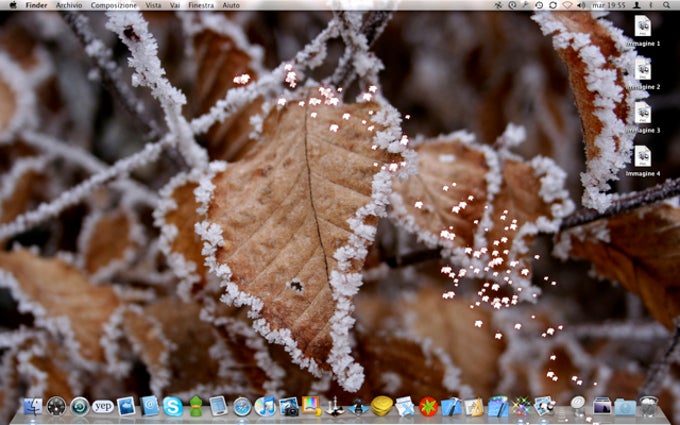Home > Articles > Design > Adobe Photoshop
␡- Star Trail Exposure Basics
Startrails For Mac
Like this article? We recommend
Do you love Startrails? Cause if you do, it can be yours for FREE. Download it from below and unzip the files to an folder. Doubleclick the startrails.exe and the application starts. No hassle with installations, to 'uninstall' just delete the folder. The 2.2.1 version of Startrail for Mac is available as a free download on our website. The application belongs to Theming Tools. Our built-in antivirus scanned this Mac download and rated it as 100% safe. This program's bundle is identified as com.pawn-soft.Startrail. $3.99 Pure Creek Mac/OS X 10.7 Version 2.2.1 Full Specs. Visit Site External Download Site. Clicking on the Download Now (Visit Site) button above will open a connection to a third-party. In this tutorial I will show you my workflow to do star trails! First, check out my friend- Emeric Le Bars' web site on time lapse: https://emericlebars.com/.
Startrail for Mac, free and safe download. Startrail latest version: Make your mouse leave a trail of stars.
Like this article? We recommend
Like this article? We recommend
Star trails are magical. It's amazing to see the stars circling in the sky, reminding us that our planet is rotating in space. For many folks who want to get started with star trail photography, it's something of a mystery and seems inherently difficult. Not so!
Copernicus and Galileo revealed that the stars are not so much in motion as the Earth is rotating. In other words, the circularity of the star trails shown in Figure 1 is created by the movement of our planet relative to the stars, not by the motion of the stars themselves.
Figure 1 Shot in the remote backcountry of Death Valley National Park, this stacked star trail image is composed of 306 exposures, which I combined in Photoshop.
Fortunately, you don't need any great astronomical insights to create striking star trail imagery. But to pull off this kind of photo, you do need to know how to expose for a star trail stack, and you must also know the secrets of stacking in the digital darkroom. The good news is that creating this kind of image has become much easier with advances in digital capture technology and improvements in the digital darkroom. With practice and imagination, you can create star trail imagery that surpasses mere gimmickry, portraying the very real poetry of the night sky.
In this article, I'll explain the basics of exposing for a star trail stack, as well as the best way to think about stacking in the digital darkroom. Once you have the night exposures you need to create a stack, the next step is putting them together correctly. Fortunately, Photoshop offers a number of easy ways to do this. I'll show you how to use three different methods for stacking starlight exposures in Photoshop Creative Cloud (Photoshop CC). Using these techniques, soon you'll be able to create stunning imagery of stars wheeling through the heavens at night!
Star Trail Exposure Basics
Startrails For Mac
If the object of capturing star trails is to show bright light streaming through a dark sky, obviously the stars must be bright when compared to the night sky. Therefore, light pollution from cities—and even towns—must be avoided. In addition, star trail photography really works best with little or no visible moonlight. When the moon is larger than a crescent, it adds enough light to the night sky to 'wash out' the star trails, preventing them from creating a dramatic display.
Stars wheeling in the heavens generally don't emit enough light for accurate light-meter readings in most cameras, making night photography of star trails a seat-of-the-pants, trial-and-error affair. To record the most starlight on your camera's sensor, it's important to use a fairly wide aperture, such as f/2.8 or f/4. As a general guideline, in the dark of the moon and concentrating on the sky rather than the Earth, a good starting exposure for starlight is four minutes at f/4 and ISO 400. In night photography circles, this exposure—which you can modify, depending on your individual circumstances—is sometimes called the 'Rule of Fours.'
For example, I made one of the component exposures of the star trail stack shown in Figure 1 at two minutes, f/2.8, and ISO 320—roughly in line with the Rule of Fours in terms of exposure value. Figure 2 shows this exposure in Adobe Camera Raw.
Star Trail For Mac
Figure 2 This two-minute star exposure in Adobe Camera Raw shows a bright sky with very little movement of the stars.
A four-minute exposure, or even a two-minute exposure, is longer than you can shoot on automatic with a digital camera. You'll need to use a manual exposure, first setting the shutter speed to Bulb, and then using a programmable interval timer (sometimes called an intervalometer) to initiate and control the sequence of star circle exposures.
Related Resources
Star Trails Software For Mac
- eBook (Watermarked) $31.99
- Book $47.99
- Web Edition $35.19
